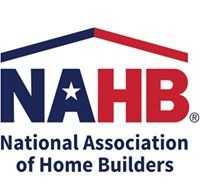WASHINGTON, D.C. – (RealEstateRama) — Extreme flood insurance rate hikes and inaccurate floodplain maps drive up the cost of homeownership and threaten small businesses, the nation’s home builders told Congress today.
Randy Noel, Second Vice Chairman of the National Association of Home Builders (NAHB) and a home builder from LaPlace, La., told the Senate Committee on Small Business and Entrepreneurship that NAHB has long supported practical, common-sense changes to the National Flood Insurance Program (NFIP).
“However, as Congress works to reauthorize the NFIP program by the September 2017 deadline, it must guard against the exorbitant rate hikes and faulty floodplain delineations that have plagued the program in the past,” Noel said.
In 2012, with the NFIP facing insolvency, Congress enacted the Biggert-Waters Flood Insurance Reform Act to ensure the program’s fiscal soundness. Unintended consequences from the legislation caused significant problems for home owners and prospective home buyers by triggering an immediate shift to full-risk rates phased in over four years.
“Home builders live and work in their communities. We see the effects of flood insurance rate increases in our personal and professional lives,” Noel added. “One Louisiana buyer bought a home only to realize the flood insurance rates had increased from $400 annually to the full-risk rate of over $13,000.
“And a neighborhood near my home in St. Charles Parish was fully devalued because of flood insurance rate increases. FEMA wouldn’t certify the levee protecting the community because it wasn’t maintained by the U.S. Army Corps of Engineers. After Biggert-Waters was enacted, home owners in that neighborhood were paying between $12,000 and $17,000 annually for flood insurance.
“The community mailed FEMA their house keys and told FEMA to keep them because the homes were worthless,” Noel added.
Flood insurance rate increases also have a direct impact on home builders. The rates make it much more difficult for owners of older properties to sell their homes and “move up” to a newly constructed home that is more resilient and built to higher construction standards. This puts local builders’ businesses in jeopardy and also constrains the local economy, he said.
Noel thanked the committee for acting quickly to remedy the problems caused by the Biggert-Waters legislation and said that NAHB estimates that nationwide there was an additional $755 million in new construction and $361 million in remodeling in 2014 because those issues had been solved.
Kevin Robles, a home builder from Tampa Bay, Fla., told the committee that housing prices in Florida are still 22 percent below normal due to the Great Recession.
“Any negative change to the market, such as flood insurance rate increases, could have long-term unintended consequences to Florida’s economy,” Robles said.
“I am a small business owner and at least a quarter of my customer base is active or retired military. I am constantly reminded of the need to keep housing prices affordable. In Florida, for every $1,000 increase in home prices, more than 8,000 households are priced out of the market,” he said.
Robles added that in Florida where there are large Special Hazard Flood Areas, it is extremely difficult to avoid building in or near a floodplain, so inaccurate floodplain maps are very problematic for builders. It can take months and cost hundreds of thousands of dollars to change the flood maps or elevate a property.
“There have been reported cases of FEMA neglecting to factor in privately funded flood control structures, or drawing in rivers or streams where none exist,” he said “Home owners are being incorrectly mapped into floodplains and forced to purchase unneeded flood insurance. It typically takes years for these mistakes to be fixed, often requiring a lengthy and costly process for the community, builder and home owner.”
CONTACTS
Stephanie Pagan
202-266-8254







